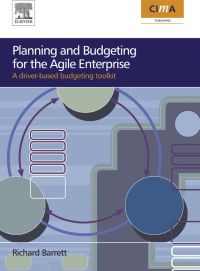Question
Tokyo AFM Prior to joining Tokyo Auto Fire and Marine (Tokyo AFM), a publicly traded Japanese casualty insurance company, in June 2001, Nobu Matsumoto had
Tokyo AFM
Prior to joining Tokyo Auto Fire and Marine (Tokyo AFM), a publicly traded Japanese casualty
insurance company, in June 2001, Nobu Matsumoto had held various management positions in the
insurance industry for 20 years, in both Japan and overseas. He was appointed chief executive officer
of Tokyo AFM after two financial service companies from the U.S. and Europe each acquired a 20%
interest in Tokyo AFM. The two new investors intended to rapidly expand the operations of the
company overseas.
Industry Background
Casualty insurance companies had two principal sources of revenue. The first source was
insurance premiums, which were payments that clients (hereafter policyholders)individuals or
businessesmade to insurance companies to provide protection against losses resulting from
adverse events such as fire or natural catastrophes. Typically, these premiums were paid up front in
cash for protection covering one-year to five-year periods. The main costs associated with insurance
contracts arose from the actual payment of losses that policyholders subsequently incurred and that
were covered by the contracts.1 Loss-related expenses were mainly divided between direct claim
payments and indirect expenses related to processing claims. Typically, insurers also incurred costs
to acquire customers and set up policies. The main categories of acquisition costs consisted of
commissions paid to agents and salespeople, administrative policy issuance costs, advertising
expenditures, and agent recruitment and training.
The second source of revenue for insurance companies was investment income. Insurers invested
their float in various financial instruments. In simple terms, the float was the amount of cash
collected from policyholders and not yet paid out for claims or other expenses. Since casualty,
particularly catastrophic, losses could occur at any time, one of the challenges for insurers was to
maintain an adequate level of liquidity in their portfolio to be ready to pay claims as they arose.
Brief Company History
Tokyo AFM was established in Tokyo in 1928 as Nippon Insurance Co., Ltd., which specialized in
property fire-damage insurance. Tokyo AFM gradually widened the range of its products over time
to become a more comprehensive property-casualty insurance group. The company was listed on the
Tokyo Stock Exchange in 1963. Over the years, the companys profits had grown at a slow but steady
pace until the casualty insurance industry was deregulated in the late 1990s. Soon after, the financial
performance of Tokyo AFM deteriorated.
Despite Tokyo AFMs desire to remain an independent insurer, the industrys deregulation
proved challenging. In early 2001, The American Banking Group acquired a 23.04% stake in Tokyo
AFM, and the German reinsurance group Bayern Re acquired 20.54% of the companys shares.
Soon after his appointment as CEO, Matsumoto became concerned that certain financial
accounting policies of the company did not reflect the economic reality of the underlying
transactions, particularly those related to revenue recognition, contract acquisition costs, reserves for
contingent future losses, and investments in marketable securities. He asked that you comment on
the companys current accounting practices and suggest any changes you might recommend, along
with your reasons. Be sure to identify the alternatives you rejected and your reasons for rejecting
them.2 Do not dismiss an alternative or reach a decision on the grounds of immateriality. If you
make any assumptions, please state them.
Financial Accounting Concerns
Matsumoto was concerned about the following Tokyo AFM accounting policies and wanted your
recommendation on each:
1. Tokyo AFM recognized premium revenue at the time it received the policyholders up-front cash
payment. The companys accountants argued that since the level of up-front payments received from
policyholders had been stable over the last few years, this method was an appropriate reflection of
economic reality.
For example, Fuji Computers entered into a five-year insurance contract with Tokyo AFM against
earthquake damage to its headquarters building. As is customary, it paid the 100 million premium
for the five-year coverage up front in cash.
Question How would you recognize revenues associated with this type of catastrophe
insurance contract?
Step by Step Solution
There are 3 Steps involved in it
Step: 1

Get Instant Access to Expert-Tailored Solutions
See step-by-step solutions with expert insights and AI powered tools for academic success
Step: 2

Step: 3

Ace Your Homework with AI
Get the answers you need in no time with our AI-driven, step-by-step assistance
Get Started


